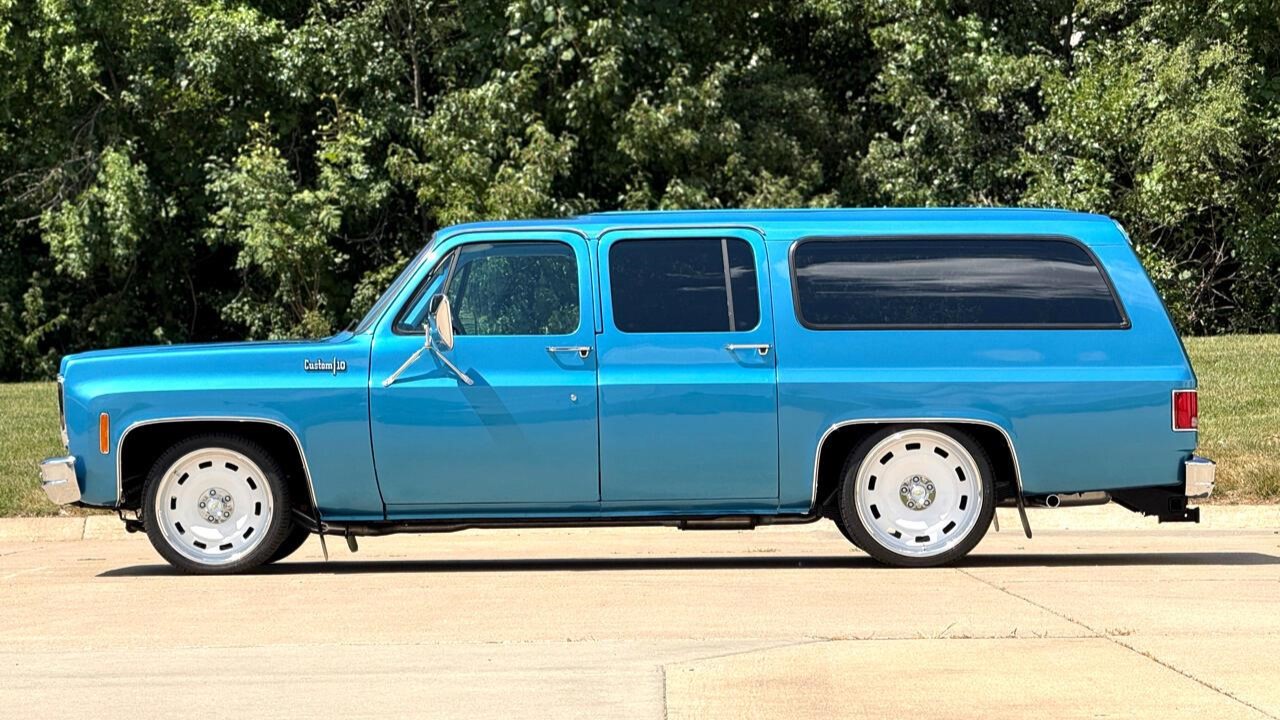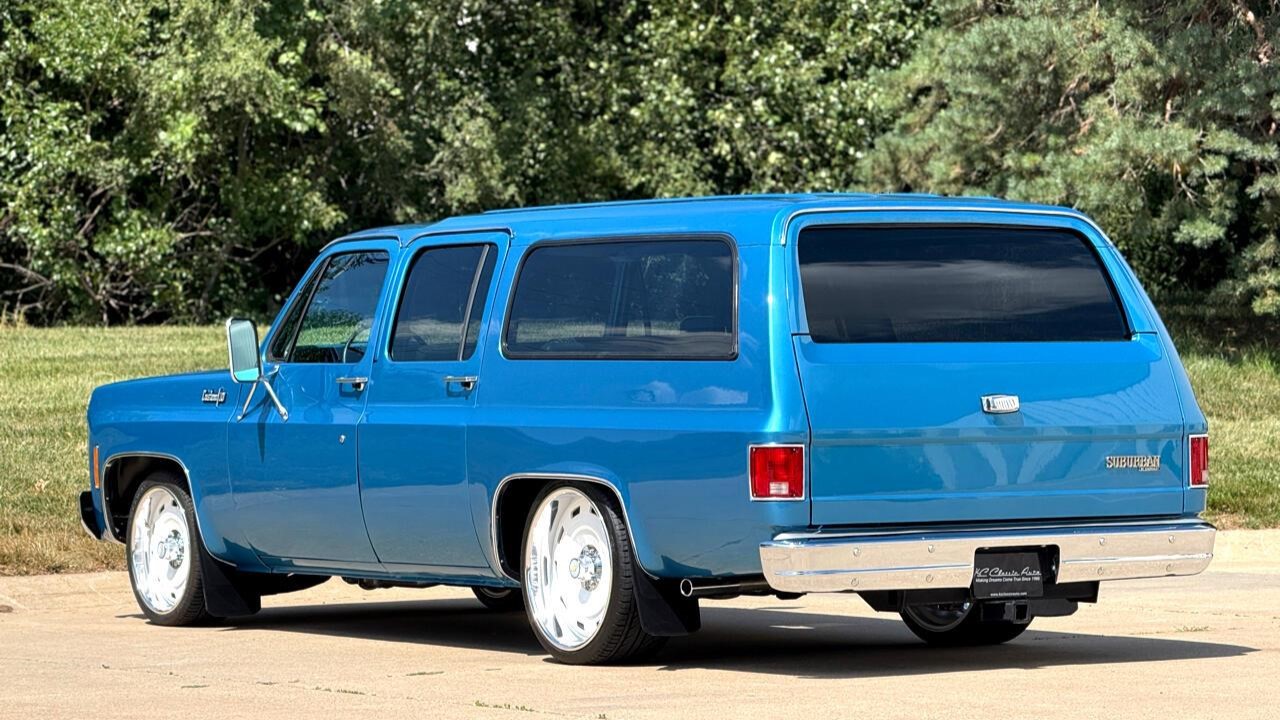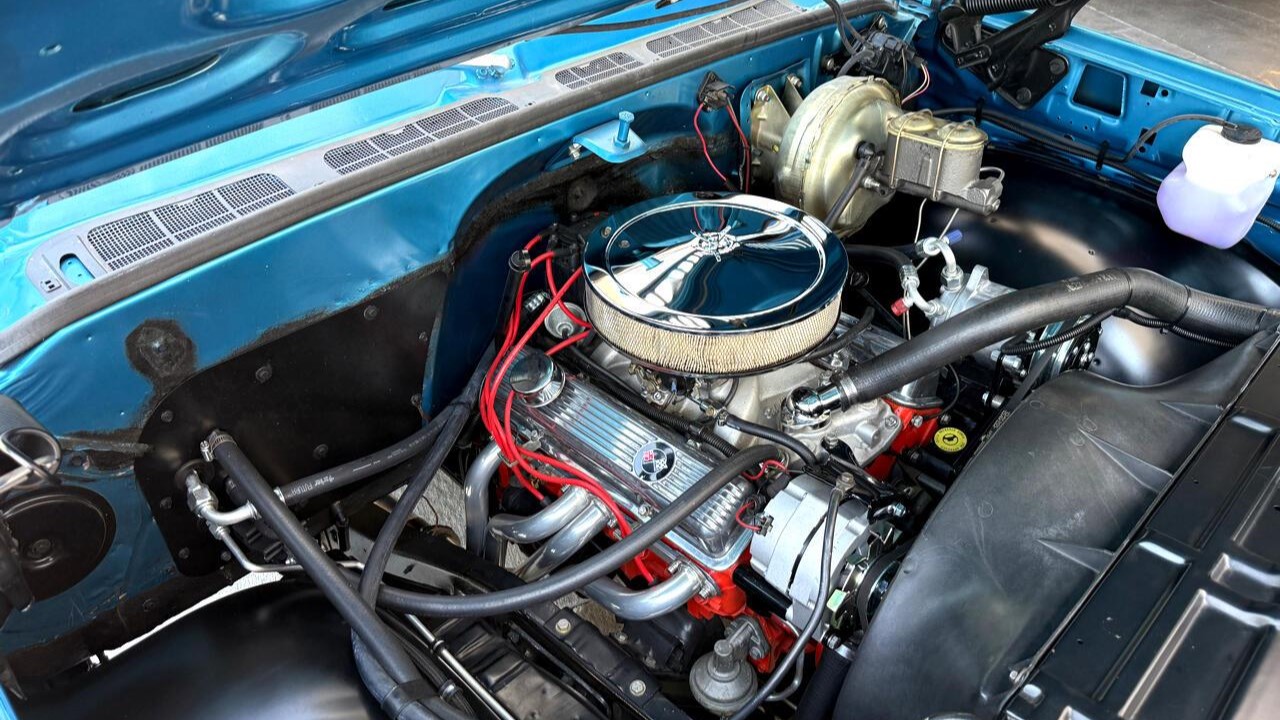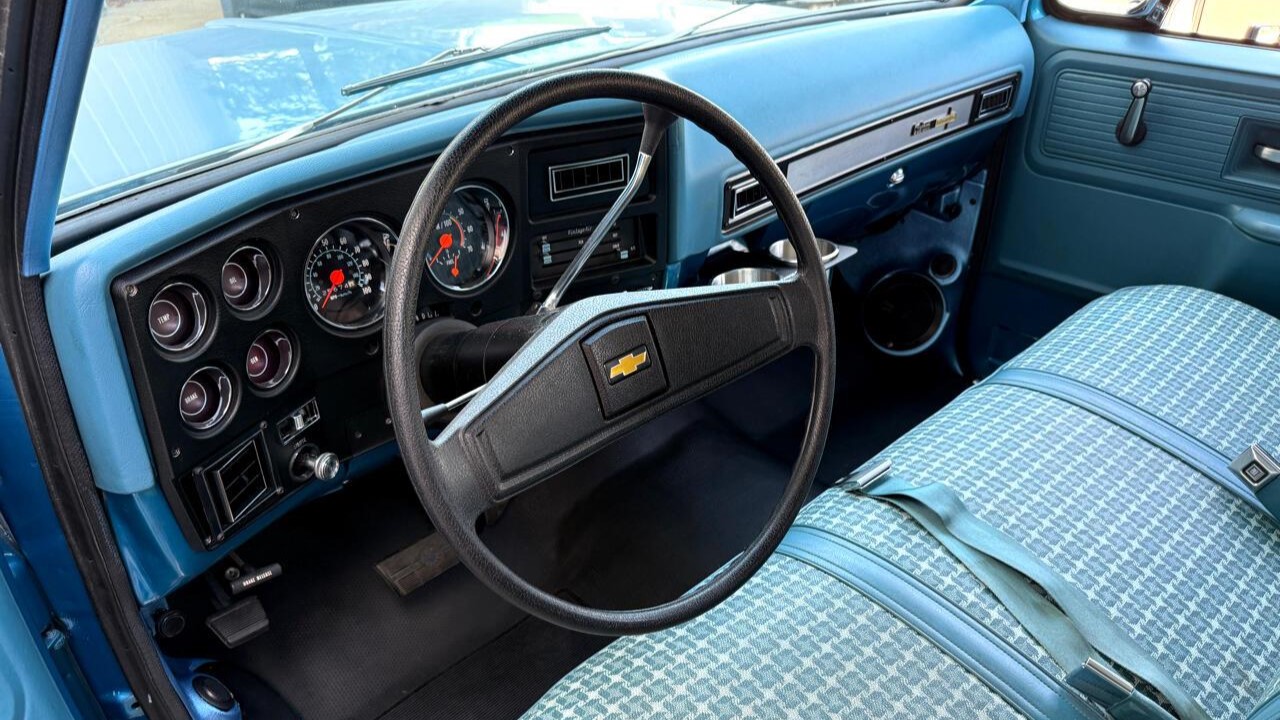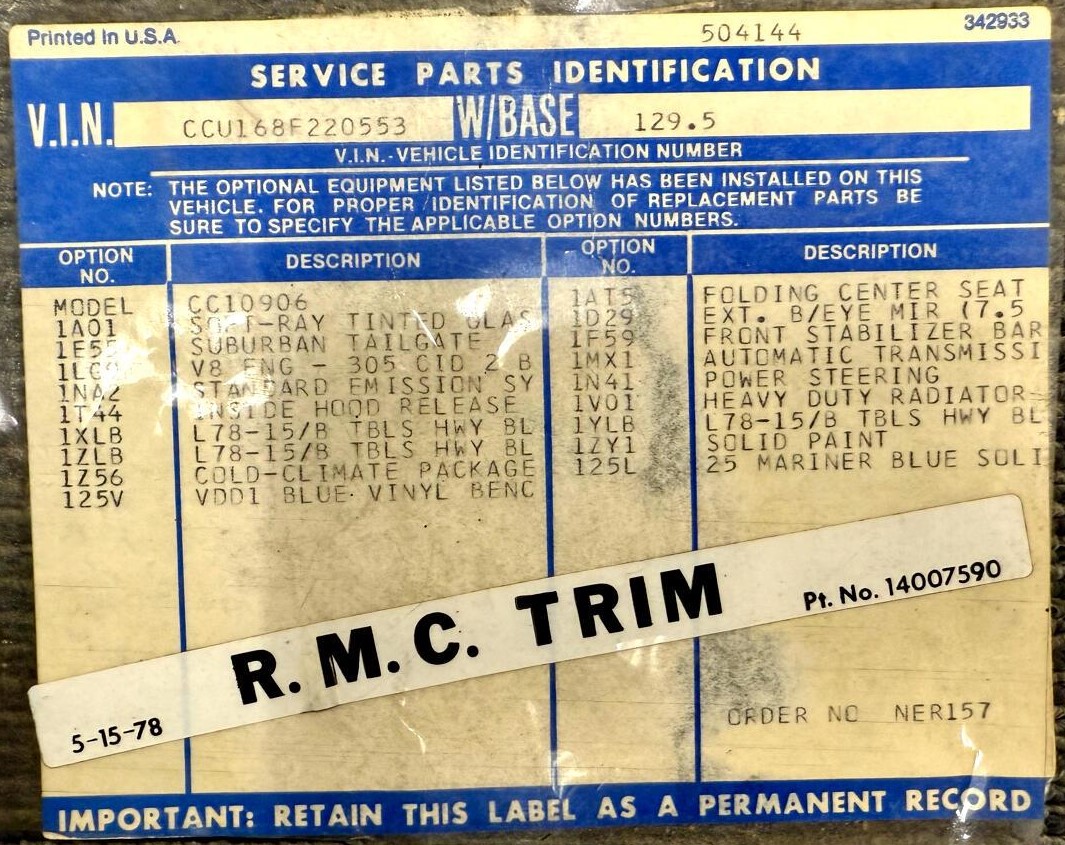A few years ago, while judging at the Radnor Hunt Concours with former GM head of design Ed Welburn, we took a walk around a 1966 Toronado on the show field, looking closely at all the styling elements of the car. After doing a full circle of the car, Ed said one word: “Magnificent.” He was right. The original Oldsmobile Toronado is an incredible car, with some of the best postwar American styling ever.
AutoHunter now has one of these landmark cars up for auction: a first-year 1966 Oldsmobile Toronado Deluxe being represented by its owner in Phoenix, Arizona. The auction ends on Monday, July 28, at 12:15 p.m. (PDT).
The Toronado project started as a design painting by Oldsmobile stylist David North in 1962. He called it his “Flame Red Car.” It was his idea of a compact sports/personal car, but it was never intended for production. Sometimes, though, miracles can happen, even at companies the size of GM. A few weeks after the design was finished, the Oldsmobile division was informed it would be permitted to build a personal car in the Riviera/Thunderbird class for the 1966 model year, using North’s design rendering.
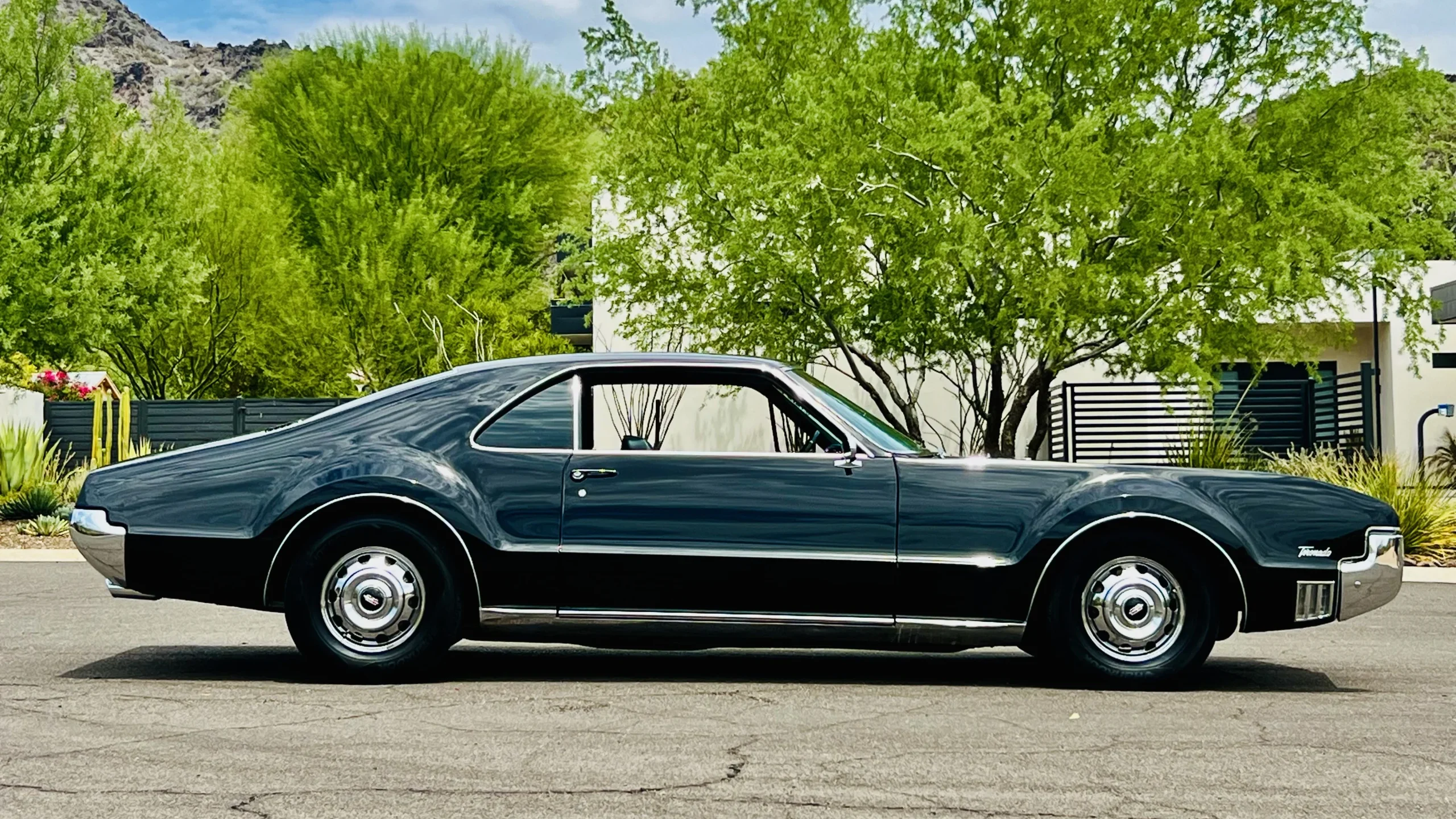
Unlike every other American personal luxury car of the time, the Toronado is front-wheel drive, one of the first in the U.S. since the 1930s. An interesting fact is that special 8.85 x 15 TFD (Toronado Front Drive) tires were developed for the car by Firestone. They featured a stiffer-than-normal sidewall and also had a tread pattern and a thin white pinstripe unique to only that tire. The car was a hit and went on through many generations, with the first-generation cars now considered classics (hence its inclusion at the concours Ed and I attended).
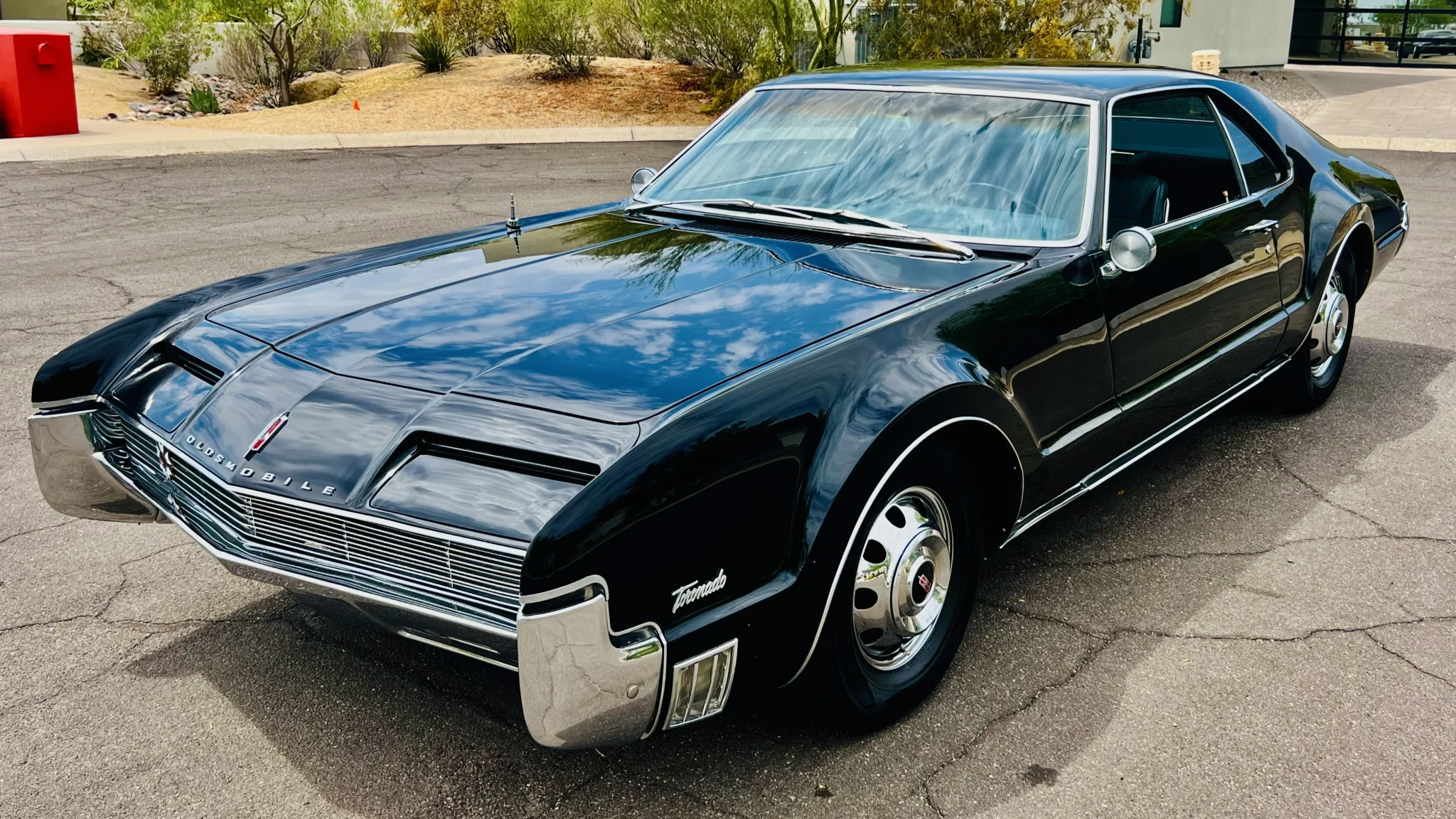
According to the description, this 1966 Toronado Deluxe is powered by a rebuilt, numbers-matching Rocket 425ci V8 mated to a three-speed Turbo Hydra-Matic automatic transmission. The car has covered 76,476 original miles from new, and features air conditioning, power windows, power antenna and front disc brakes. It is finished in Ebony Black and is offered by the seller with manuals, service receipts and a clear title.
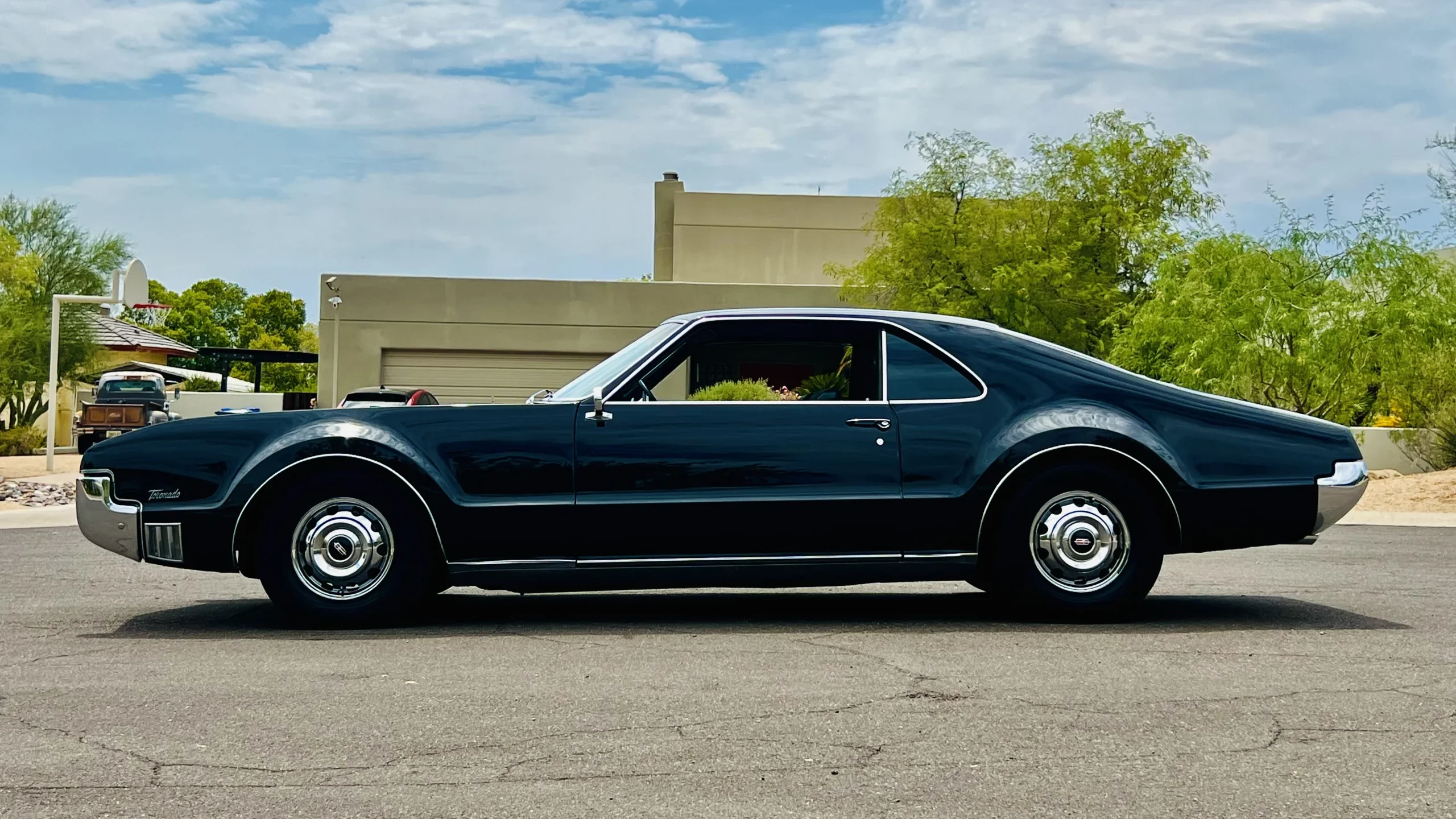
The exterior looks to be in spectacular show condition, with only a few stone chips. With a little bit of work, this car would be ready for a regional concours, where it would probably do quite well. Driving a car like this Toronado on an event like the Copperstate 1000 would be amazing – and something you rarely see at a vintage car rally.
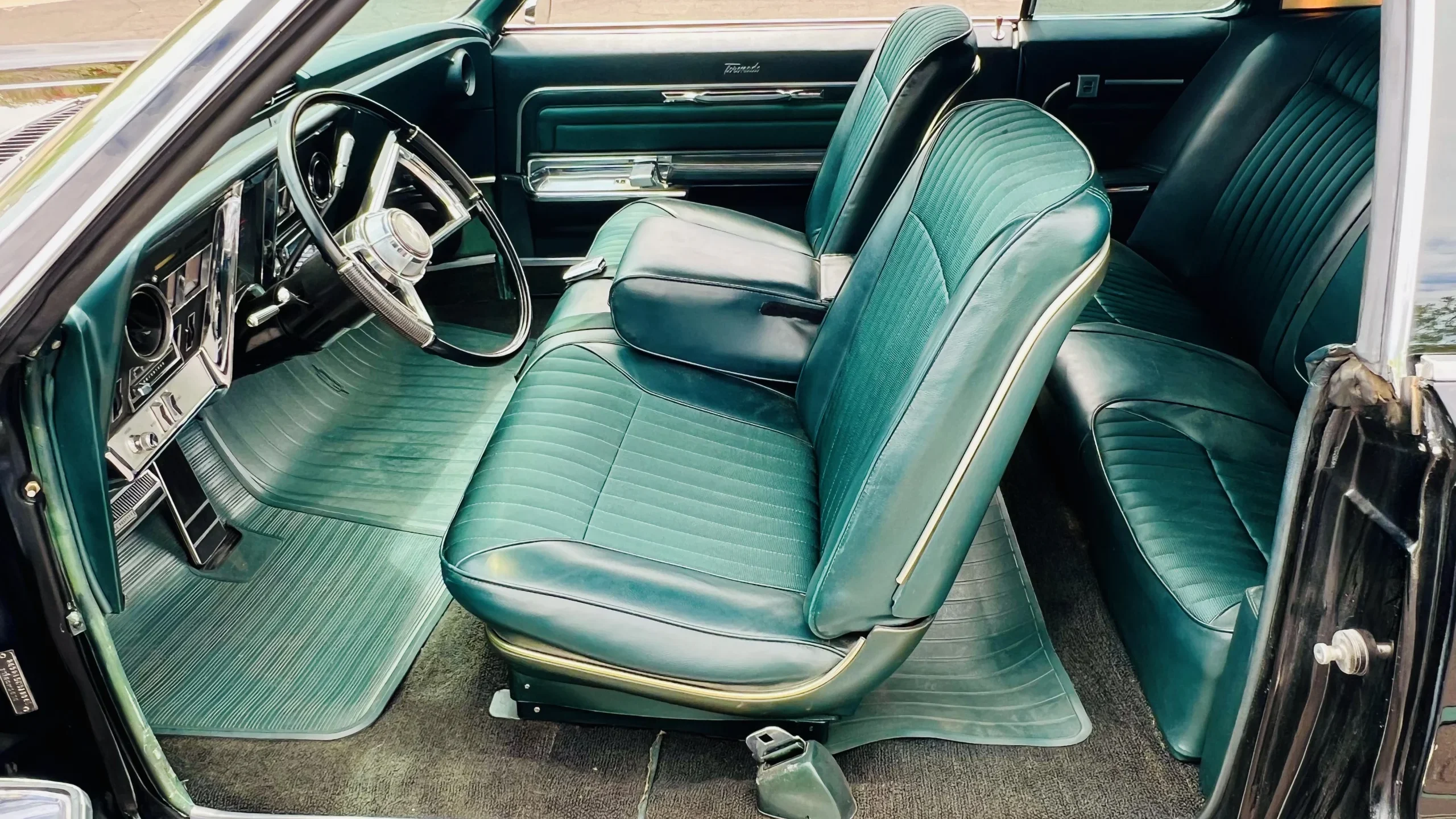
The interior, which is finished in its correct green cloth and vinyl upholstery, features a front bench seat with a fold-down armrest. The cabin looks to be in great shape, with only minor wear on the driver’s seat. I personally love the dash layout with the horizontal barrel-style speedometer and additional instruments for temperature, amperage, clock and fuel level.
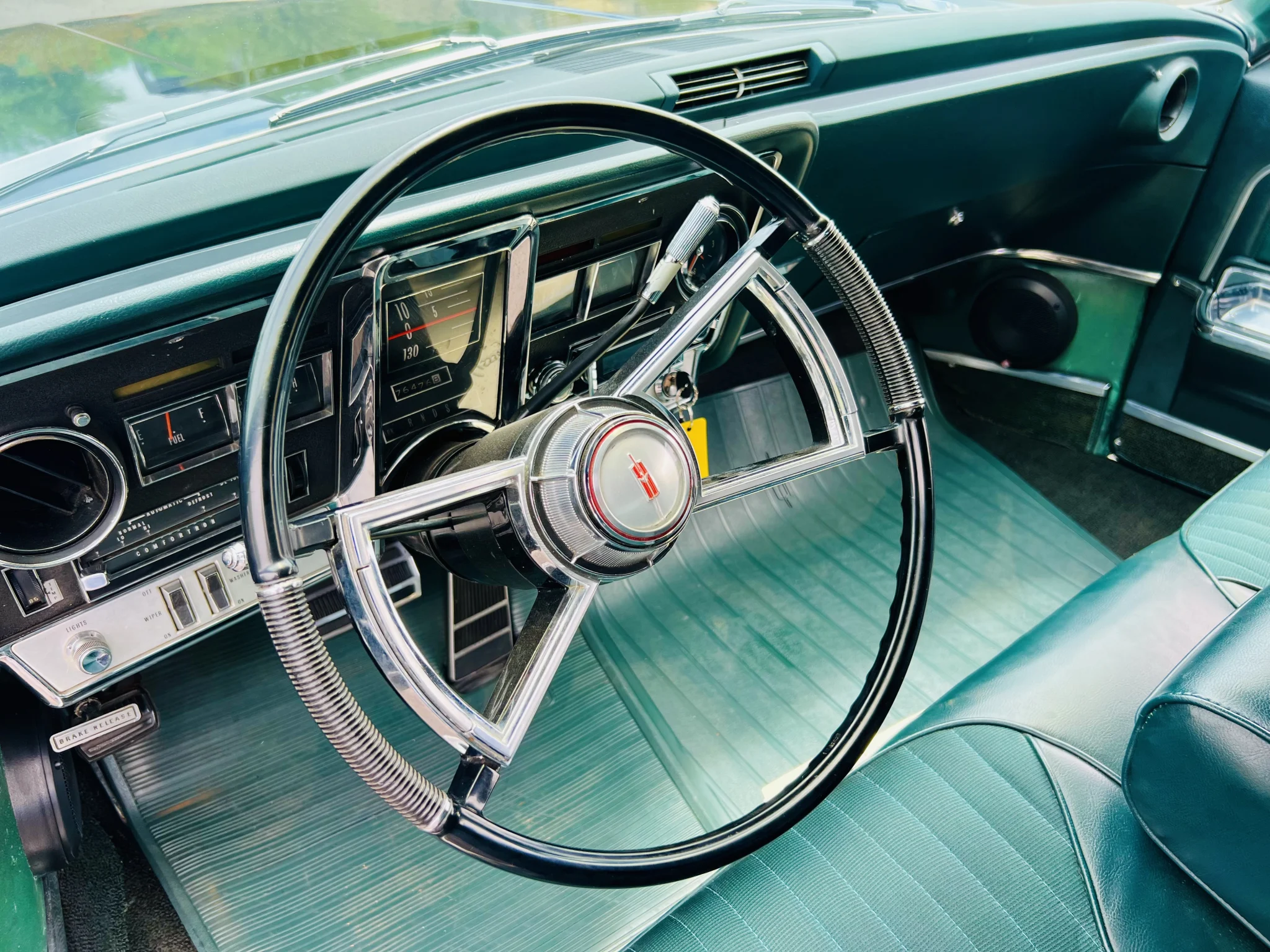
Under the hood is the numbers-matching Oldsmobile 425ci Rocket V8 with 385 horsepower at 4,800 rpm, and a staggering 475 lb-ft of torque at 3,200 rpm. It sends power to the front wheels via a three-speed Turbo Hydra-Matic automatic transmission. The engine received a complete rebuild in 2001, and the four-barrel carburetor was rebuilt in June 2025. Everything under the hood not only looks correct, but also is in excellent condition.
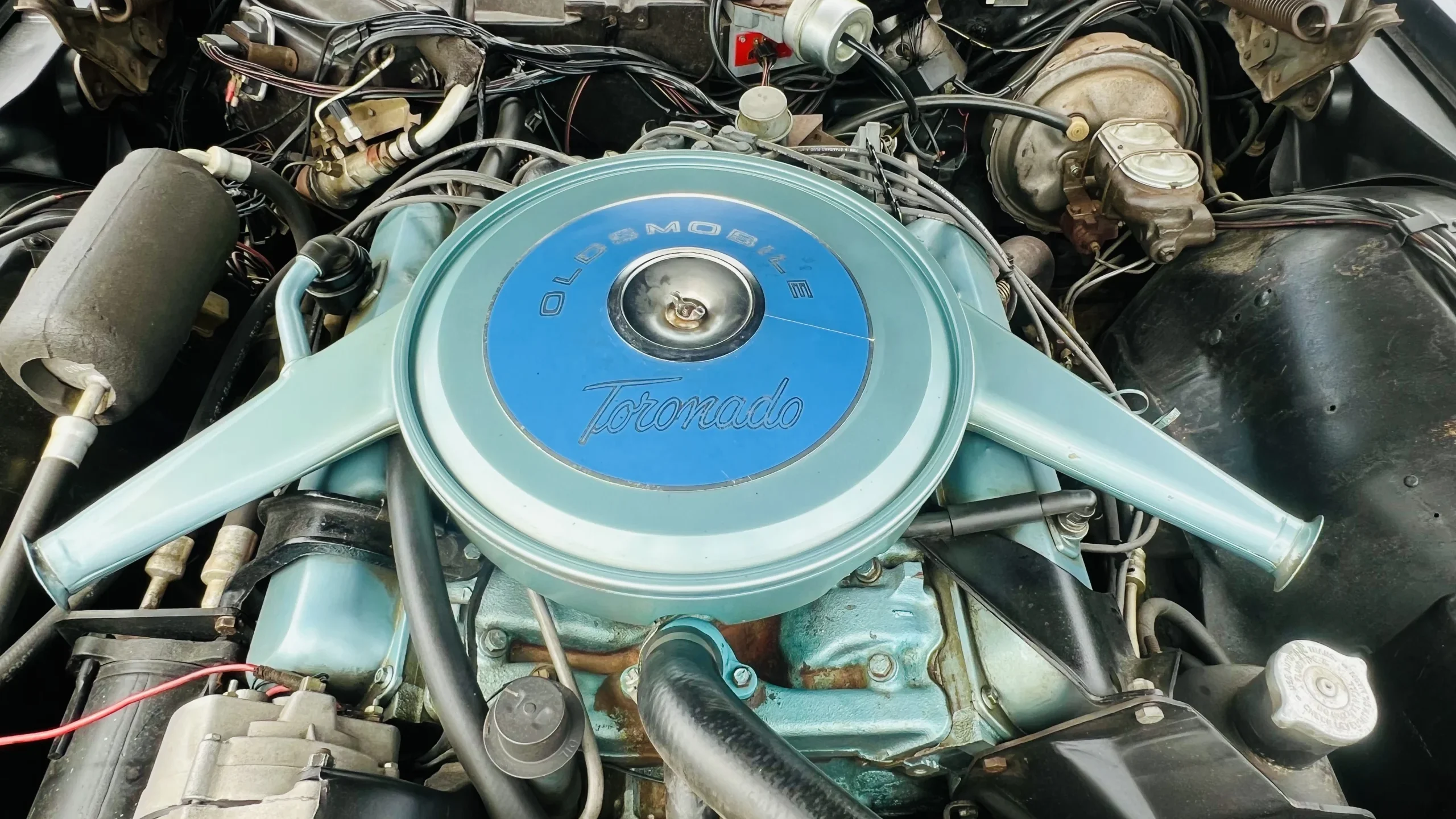
Truly great examples of these first-year Olds Toronados do not come up for sale often and are quite rare to see these days. This specific example looks to be a great car that would provide its new owner with years of enjoyment. If you are interested, though, I would act fast – the auction for this 1966 Oldsmobile Toronado Deluxe ends on Monday, July 28, at 12:15 p.m. (PDT).
Visit the AutoHunter listing for more information and a photo gallery

